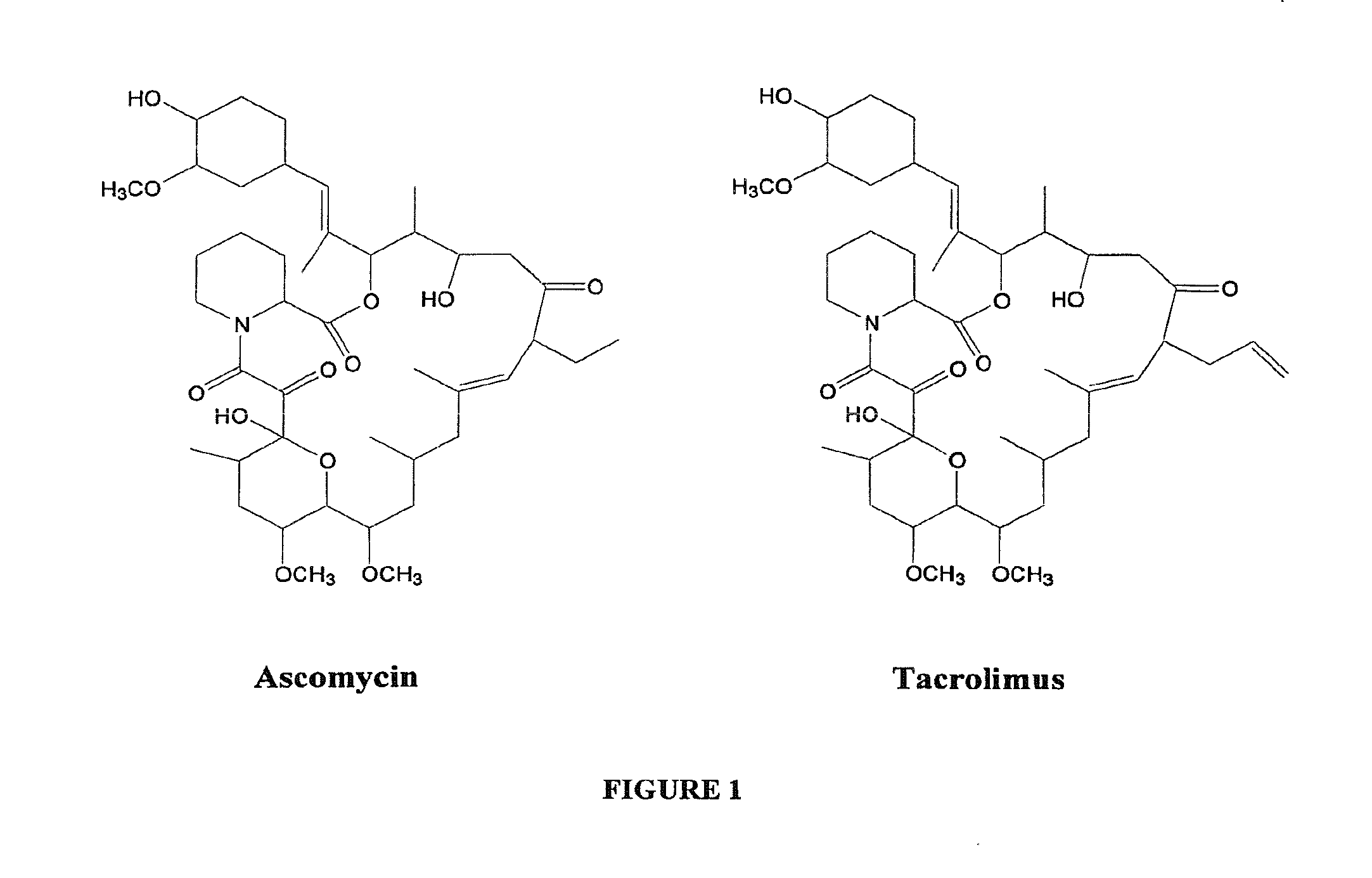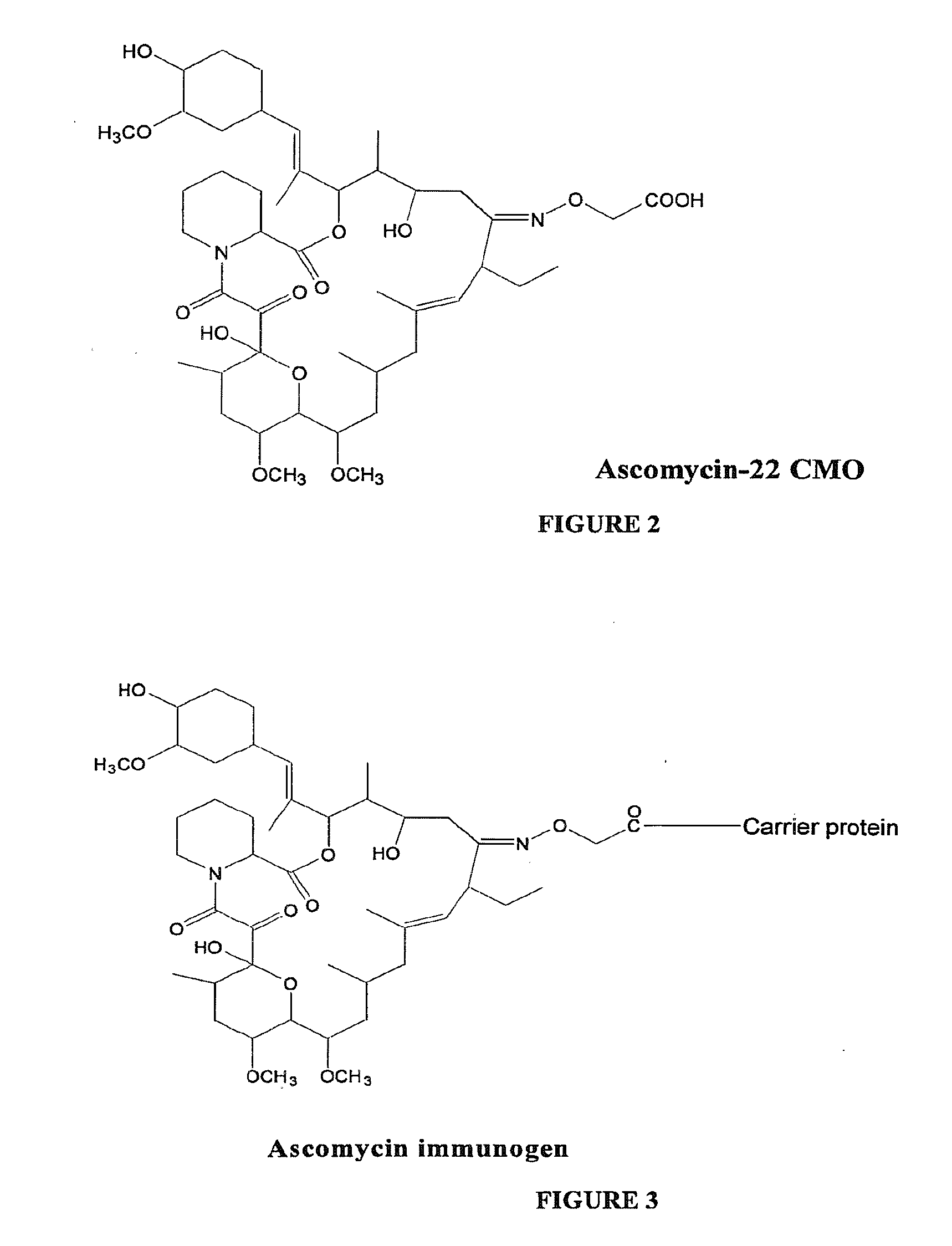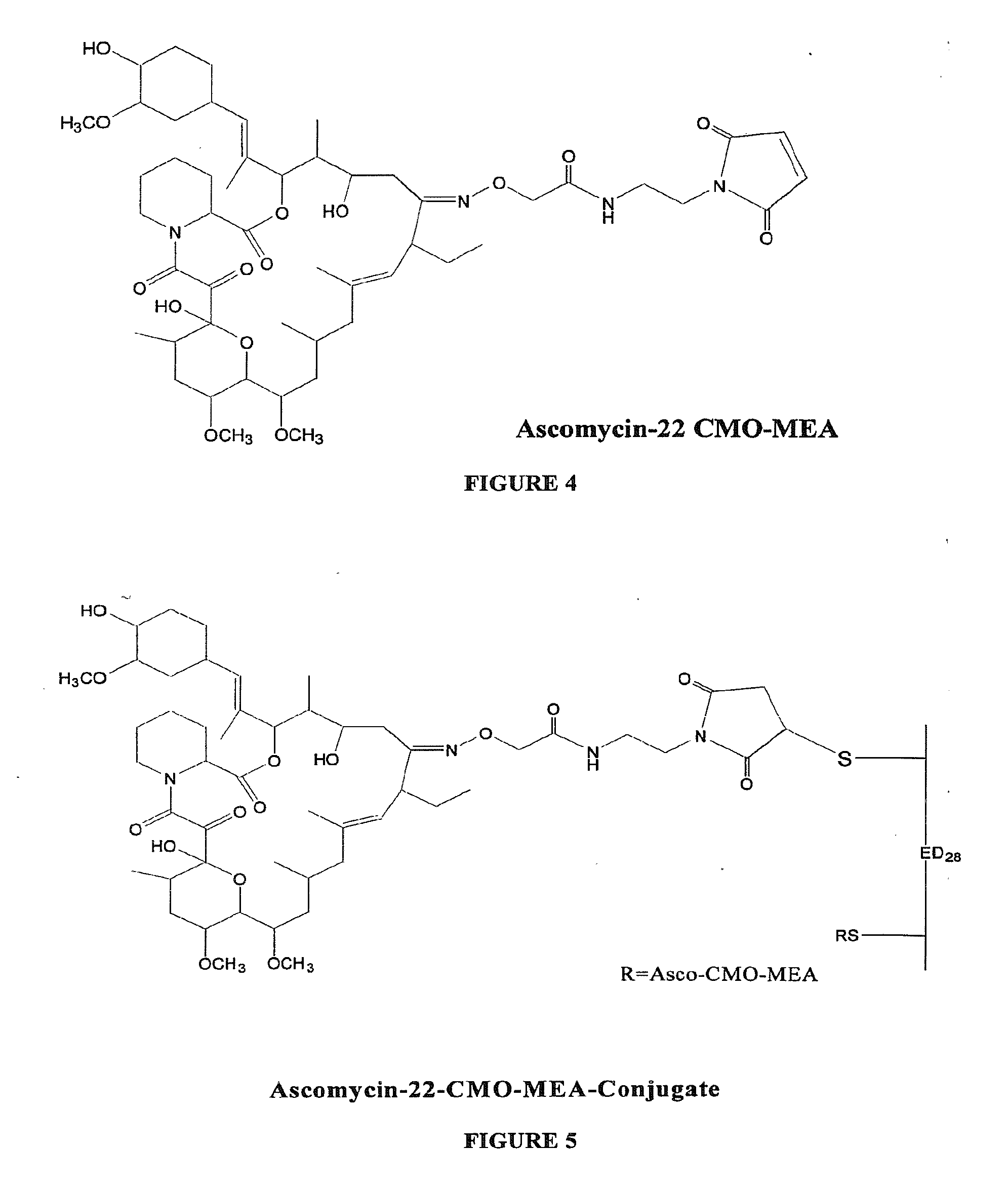Hapten, Immunogens and Derivatives of Ascomycin Useful for Preparation of Antibodies and Immunoassays
a technology of immunogens and derivatives, applied in the field of prepared derivatives of ascomycin, can solve the problems of differences in commercial pharmaceutical products and treatment protocols, loss of therapeutic value of tacrolimus immunosuppressive effect, and impaired gene expression in t cells
- Summary
- Abstract
- Description
- Claims
- Application Information
AI Technical Summary
Benefits of technology
Problems solved by technology
Method used
Image
Examples
example 1
Preparation of Ascomycin-CMO Hapten
[0027]To a stirred solution of ascomycin (30 mg, 0.038 mmol) in 3 ml of methanol were added sodium acetate (8 mg, 0.095 mmol) and carboxymethoxylamine hemihydrochloride (16.5 mg, 0.076 mmol). The resulting reaction mixture was stirred at room temperature for 24 hrs and monitored by thin layer chromatography (silica gel; methanol:chloroform, 5:95) to determine completion of the reaction. Methanol was removed using a roto-evaporator and diluted with 20 ml of water. The pH of the reaction mixture was adjusted to 5.0 with 1 N HCl and extracted with dichloromethane, 3×25 ml. The dichloromethane layer was washed with water, brine and dried over anhydrous magnesium sulfate. The solvent was removed under reduced pressure to yield 29 mg of ascomycin-carboxymethyl oxime (ascomycin-CMO) as a white crystalline solid. The structure of ascomycin-CMO prepared according to the exemplary method is shown in FIG. 2.
example 2
Preparation of Immunogen from Ascomycin-CMO Hapten
[0028]To a stirred solution of ascomycin-CMO (4.3 mg, 0.00497 mmol) in 0.5 ml of dimethyl formamide (DMF) was added 1-ethyl-3-(3-dimethylaminopropyl)carbodiimide hydrochloride (EDAC) (3 mg, 0.0156 mmol) and N-hydroxy-5-norbornene-2,3-dicarboximide (NHDC) (2.5 mg, 0.0137 mmol). The reaction mixture was stirred at room temperature for 4 hours and monitored by thin layer chromatography (silica gel; methanol:chloroform, 5:95). The resulting ascomycin-CMO-NHDC ester was reacted with a substance having antigenic carrier protein properties, such as bovine serum albumin (BSA), keyhole limpet hemocyanin (KLH), ocular lens proteins, egg ovalbumin, lipoproteins, and the like, or any protein fragment thereof. FIG. 3 shows the structure of an immunogen according to an embodiment of the present invention.
[0029]As a further example, to a solution of KLH (20 mg) in 0.1 M PBS, pH 7.0 (2.4 ml) and DMF (0.1 ml) was added 0.5 ml of the above-described a...
example 3
Preparation of Ascomycin-CMO-MEA Adduct
[0030]To a stirred solution of ascomycin-CMO (10 mg, 0.01157 mmol) in DMF (1 ml) were added EDAC (6.628 mg, 0.0347 mmol) and NHDC (6.32 mg, 0.0347 mmol). The reaction mixture was stirred at room temperature for 3 hours and monitored by thin layer chromatography (silica gel; methanol:chloroform, 5:95). Maleimidoethylamine (MEA) hydrochloride (6.13 mg, 0.0347 mmol) was added to the reaction mixture and the reaction mixture pH was adjusted to 8.0 with triethyl amine. The solution was stirred at room temperature for 30 minutes. The reaction mixture was purified by HPLC to give 4.5 mg of ascomycin-CMO-MEA as a white solid. The structure of an ascomycin-CMO-MEA adduct prepared according to the exemplary method is shown in FIG. 4.
PUM
| Property | Measurement | Unit |
|---|---|---|
| melting point | aaaaa | aaaaa |
| melting point | aaaaa | aaaaa |
| concentration | aaaaa | aaaaa |
Abstract
Description
Claims
Application Information
 Login to View More
Login to View More - R&D
- Intellectual Property
- Life Sciences
- Materials
- Tech Scout
- Unparalleled Data Quality
- Higher Quality Content
- 60% Fewer Hallucinations
Browse by: Latest US Patents, China's latest patents, Technical Efficacy Thesaurus, Application Domain, Technology Topic, Popular Technical Reports.
© 2025 PatSnap. All rights reserved.Legal|Privacy policy|Modern Slavery Act Transparency Statement|Sitemap|About US| Contact US: help@patsnap.com



